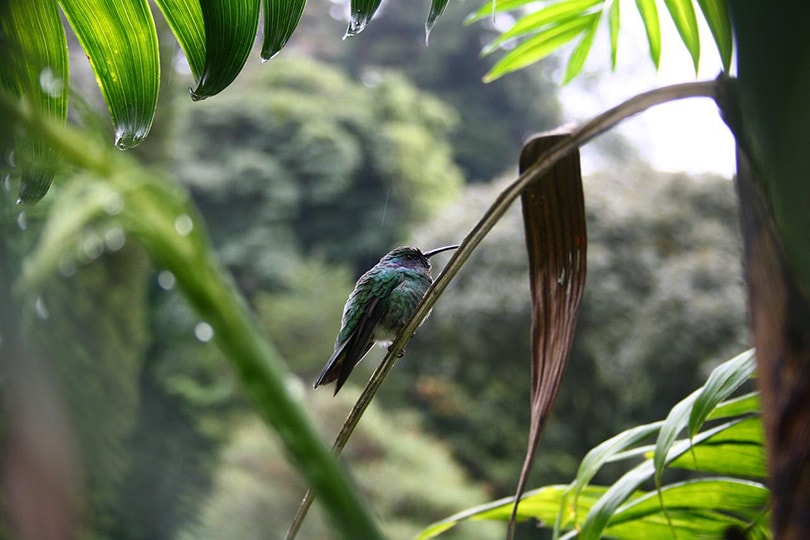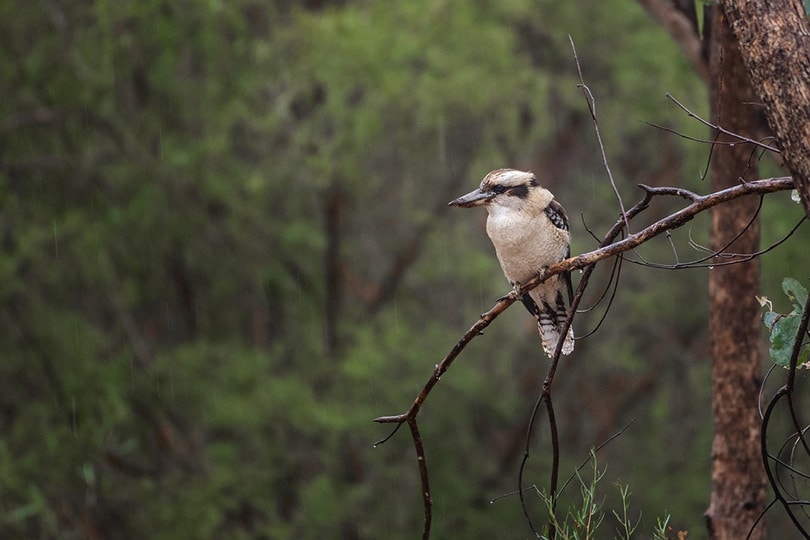Where Do Birds Go During a Hurricane? The Surprising Answer!
Last Updated on

Facing a hurricane is a scary scenario for us humans, but what about the animals in the area? Yes, domesticated pets are evacuated with their humans and local wildlife like deer and raccoons flee or find a safe place to weather the storm, but what about birds? Where do birds go during a hurricane? With hurricane season growing more dangerous each year, many animal lovers are left asking themselves these types of questions. Luckily, we’ve found the answers.

How Is a Hurricane Defined?
Before we discuss where birds go during a hurricane, it’s important to understand what a hurricane is. These events take place when a tropical cyclone is formed. This is a rotating low-pressure system that has no front, but features organized thunderstorms. When these tropical cyclones have sustained surface winds of less than 39 miles per hour they are called tropical depressions. If the winds are higher than 39 miles per hour, they are categorized as tropical storms.
A hurricane is born when a tropical storm’s sustained surface winds reach 74 miles per hour. A scale, known as the Saffir-Simpson Hurricane Wind Scale is then used to give the hurricane a category rating between 1 and 5. The higher a hurricane’s winds are, the more damage it can do and the higher the category rating will be.
Hurricane season runs from June 1st through November 30th each year. Most hurricanes originate in the Atlantic Basin. This basin includes the Atlantic Ocean, the Gulf of Mexico, the Caribbean Sea, the Eastern North Pacific Ocean, and the central North Pacific Ocean. Fortunately, there is less potential for a hurricane to stem from the central North Pacific Ocean area. When one of these storms hits, most of us are glued to our televisions keeping up with the latest storm that has been named by the World Meteorological Organization and is potentially headed for land to cause damage.

Birds May Ride Out the Storm
While we humans have ways of knowing when a hurricane is approaching thanks to scientists and meteorologists, birds aren’t privy to this information. There is no way to determine if birds sense an oncoming hurricane, but when the winds begin to increase, they spring into action. Birds without nests or other reasons to stay in the area may simply fly away. This is especially true for larger birds. Unfortunately, not every bird has that option. Nesting birds and other species from the area will batten down the hatches like some humans and ride out the storm.
During an approaching hurricane, birds have been known to hide inside trees, under the eaves of homes, and even under buildings themselves. Seaside-dwelling birds have been known to move inland to find safety in marshes and thicker habitats. Astonishingly enough, many birds can survive a hurricane and the high winds as they push through.
On the Open Water
Unfortunately, hurricanes aren’t only dangerous to birds on land. During the later parts of the year, from late August and on, many birds are starting their migration. This is when birds leave their homes and fly south to prepare for the winter weather that is on its way. During this trek, however, hurricanes still form, leaving the birds on the open water to deal with winds and rains.
These migrant birds have developed a way to survive hurricanes on the open water by flying downwind and reaching the eye of the storm. Inside the eye of a hurricane is an area of calm. This allows these birds to fly with the hurricane, whichever direction it is moving until it reaches land. Upon landfall, the birds will immediately seek shelter in the same areas the land birds use. When the storm has passed, migratory birds will eat, rest, and prepare to fly off once again.

Seabirds in a Hurricane
While most of us love the opportunity to see a rare seabird on land, this often means they have ridden a hurricane in. While seabirds love spending time on the water, they do get caught up in hurricanes like other birds. Similar to the actions of migratory birds, they will fly into the eye of the storm and use the calm in the center to bring them onto the shore. Once the storm has passed, these birds can be seen in ponds and marshes where they don’t normally appear. When they are strong enough to return home, they head out before the next storm comes.
The Aftermath
Hurricanes cause severe damage when they make landfall. For humans, we notice lost lives, homes, businesses, and property. For birds, it can be just as devastating. Not every bird will survive the vicious wind and many will lose their lives. Others will find the habitat they call home destroyed. Fortunately, for birds, there may be a bright side. Hurricanes have been known to knock down trees and change a habitat’s landscape to open the area and allow for more diversity when it comes to wildlife.

How We Can Help
After hearing about the dangers birds go through during a hurricane, it is natural to want to help. Whether you decide to volunteer with your local wildlife rehabilitators or prefer to offer a helping hand close to home, the birds will be thankful. Here are a few things you can do to help the birds in your area after a hurricane has stormed through.
- Fill bird feeders in your area with high-quality food to help them recover quickly
- Offer access to clean water in birdbaths and other containers for easy access
- Help restore habitat by volunteering for cleanups
- Take any injured birds to a local wildlife rehabilitator to help them on their way to recovery

Conclusion
With the devastation that a hurricane can bring, coming together is the best way to recover. Keep in mind, however, that it isn’t only our neighbors who need our help, the local wildlife suffers as well. While birds have several ways of preparing and surviving through these types of storms, they need time to recuperate and heal afterward. If you find your backyard full of local, migratory, or sea birds take the time to feed, water, and nurture them. They’ve ridden out the storm just as you have and need time to get their bearings back in order before they continue on their journey.
Featured Image Credit: Montevideo, Pixabay
About the Author Robert Sparks
Robert’s obsession with all things optical started early in life, when his optician father would bring home prototypes for Robert to play with. Nowadays, Robert is dedicated to helping others find the right optics for their needs. His hobbies include astronomy, astrophysics, and model building. Originally from Newark, NJ, he resides in Santa Fe, New Mexico, where the nighttime skies are filled with glittering stars.
Related Articles:
10 Types of Hummingbirds in Arkansas (With Pictures)
8 Types of Hummingbirds in Nebraska (With Pictures)
5 Types of Hummingbirds in Idaho (With Pictures)
3 Types of Hummingbirds in Mississippi (With Pictures)
8 Types of Hummingbirds in Kansas (With Pictures)
5 Types of Hummingbirds in West Virginia (With Pictures)
5 Types of Hummingbirds in Ohio (With Pictures)
Where Do Nuthatches Nest? Nuthatch Nesting Habits Explained
